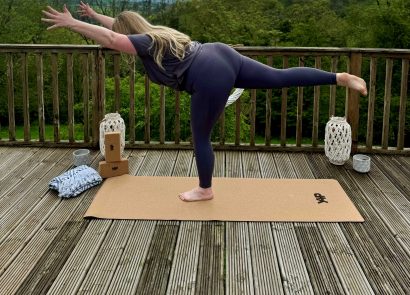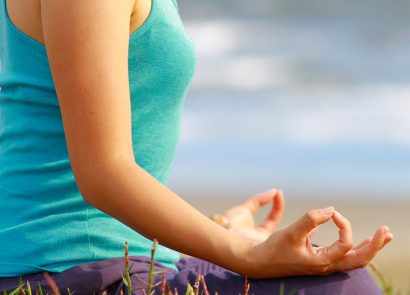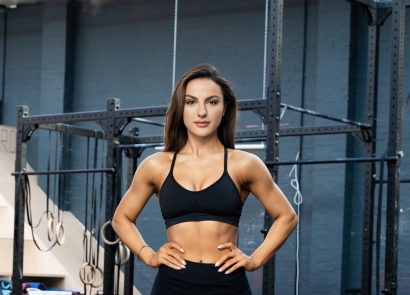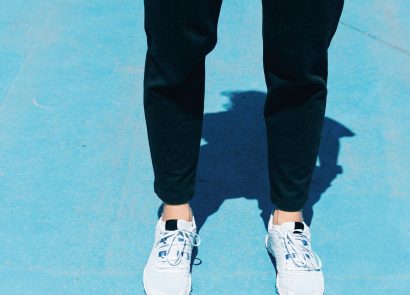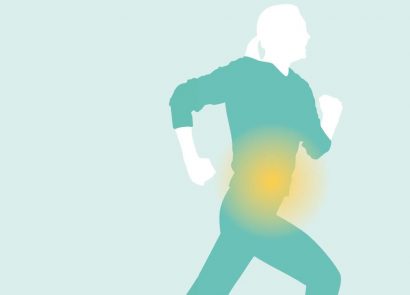BE CLEVER WITH CROSS-TRAINING
It’s well-known that to get better at your sport, you need to practise a great deal. But, don’t overlook cross-training as a way of boosting your fitness while reducing the risk of injury – the last thing you want is to push your body so hard you put it out of action. Runners, for example, are prone to niggles because of the high-impact nature of the hobby. But by spending one session per week doing another form of CV exercise, such as cycling or swimming, you can still work on aerobic fitness without overusing the same muscles you use when running.
Yoga is another great way to help boost your stamina and performance in a range of sports. Top athletes are doing it – tennis stars Serena Williams and Andy Murray have both tried bikram yoga, which involves doing a serious of poses in a very hot room. Murray went to classes in Fulham under the expert guidance of Olga Allon, founder of Hot Bikram Yoga, who also has two other London studios (hotbikramyoga.co.uk). “It’s helped a lot with my fitness and mental strength,” says Andy, who was even spotted at Wimbledon striking a bikram pose! So, why is it useful? “Bikram yoga really works the mind and body and also provides a cardio workout,” Olga explains.
“As well as improving flexibility, Andy’s strength, stamina and lung capacity would have certainly benefited,” she adds. “Following work with Andy and recommendations from the Lawn Tennis Association, we’ve started to see more tennis players coming to our classes to improve their flexibility, mobility, control and co-ordination.”
REMEMBER TO REST
Boosting your fitness levels isn’t all about training as much as possible, as you don’t want to risk injury and burnout. What’s the ideal number of rest days per week? Bud Baldaro, top running coach and member of the ASICS Pro Team (asics.co.uk), explains…
“It all depends. To gain improvement you will have to learn to overload your system by asking it to do more – that could be two miles as opposed to one, or 15 rather than 12. Then, allow your body to rest and recover before increasing your work load further, i.e. stress your system, adapt in recovery phase, then re-stress your system. Overall, I would aim for at least two days of rest per week, as this gives your muscles time to repair.”
GET IN A GOOD FRAME OF MIND
How can you create the right head space to push yourself harder? Registered yoga teacher and trainee sports psychologist Nicola Hobbs (mindmuscleyoga.com), says…
“Much of what holds you back from reaching fitness, sporting or weight-loss goal is in your mind. All too commonly we sabotage ourselves with our own limitations. Yoga is a great tool for teaching you how to challenge these self-imposed limits and redefine the boundaries of what is possible. Yoga poses provide you with the opportunity to find and push your ‘edge’ (the place between the known and the unknown). This can be a flexibility, endurance, concentration or any other physical, mental or emotional edge by which you feel restricted.
“We tend to steer clear of these edges in our fitness regime and daily life, instead remaining well within our comfort zone. Playing with your physical edge in a yoga posture by holding it a few breaths longer, stretching slightly higher, or releasing more deeply into the pose will show you that by stepping out of your comfort zone, you can experience real growth and improvement.
“Try to become aware of your fitness comfort zone and see whether you can move outside of it. If you usually exercise alone in the gym, try joining a circuits class; if marathon running is your chosen hobby, have a go at Pilates or yoga; and, if you’re relying on the step machine to burn calories, mix it up with some weight lifting. By becoming aware of your edges and working outside of your comfort zone, you’ll remove the limitations causing you to plateau. This will provide an opportunity for progression and help you discover new ways to stay fit and healthy.”
BUILD UP GRADUALLY
Ramp up your training schedule too much and you’ll be in danger of getting injured. Bud tells us how to up the intensity sensibly… “I like to use this philosophy: when you build a house, you need firm foundations. When you seek real running fitness, you need to ensure you lay down good aerobic foundations before you put in the faster work.
There is no short-cut to getting really fit for running; it takes time, and the absolute key is learning how to spend time on your feet. Traditionally, the ‘long’ run in a weekly training plan is done on a Sunday morning because of obvious social reasons. Now, many people have far greater flexibility, but the need for the long base run continues – it’s absolutely key in developing good running fitness. Long is of course a relative term; initially, it might be 15 minutes, which you progress patiently to 30 minutes, then 45 and hopefully up to one hour or even longer, given time. It often helps to find a running partner too. Why not join a club or start your own training network? It all helps to make your sessions so much more enjoyable.”
LEARN TO RESIST
Don’t do enough strength sessions? Tony Kochhar, consultant orthopaedic surgeon, specialising in shoulder, elbow and upper limbs (shoulderdoctor.co.uk) reminds us of the benefits… “Weight training is often ignored by runners, swimmers, and cyclists; but you can gain key benefits by putting it back on the agenda. Proper training strengthens the muscles, bones and connective tissue of injury-prone joints. Just six weeks of weight training has been shown to prevent, reduce or relieve common injuries, such as runner’s knee. Compound moves, like squats, work on muscle groups centred to your core, the origin of your body’s power and stability. The benefits extend to stamina, too – 10 weeks of weight training results in marked reductions in 10k run times. Plus, improvements to energy economy ups the amount of time before you feel fatigue, and boosts speed.”
FUEL YOUR BODY RIGHT
Which foods are best for endurance training? Ex-pro athlete and senior lecturer and researcher in dietetics at Coventry University, Dr Ricardo Costa, explains why carbs should definitely be on the menu…
“Carbohydrate is your body’s main energy source. So, endurance exercise performance is dependent on the availability of carbs to working muscles. An adequate intake of carb-rich foods and drinks is associated with optimal endurance performance – and a low one with fatigue and poor staying power. The challenge is finding the right quality of carbs, and the best time to eat them before and during endurance workouts.
“Studies have shown that eating a carbrich meal – e.g. pasta, rice, potatoes, couscous, bread, other grains and cereals – 3-4 hours before exercise can boost carbohydrate availability to working muscles. Or, a high-carb snack, containing natural fruit and/or dairy sugars, eaten 1-2 hours before endurance exercise, is enough to maintain blood-sugar levels and also boost carb availability to working muscles during sessions lasting up to an hour, if enough daily dietary carbs are eaten. Try my Tantrum Muesli, below.
“Sadly, your body’s carb stores are limited, and can only sustain strenuous endurance exercise for 60-90 minutes without negatively affecting performance. So, extra carb intake is vital during training lasting longer than an hour, to help maintain blood-sugar levels, hold off fatigue, and sustain your workload.”
Dr Ricardo Costa suggests the following, to help keep you going, but finding out which ones work best for you – and your stomach – might take a little trial and error:
- 500ml fruit juice
- Two handfuls of dried fruit
- One medium cereal bar (choose bars low in fat and fibre)
-
Two large pieces of fresh fruit
- Two slices of white bread with honey or high-fruit jam
(N.B If you choose solid foods, these will need to be diluted with extra water intake)













